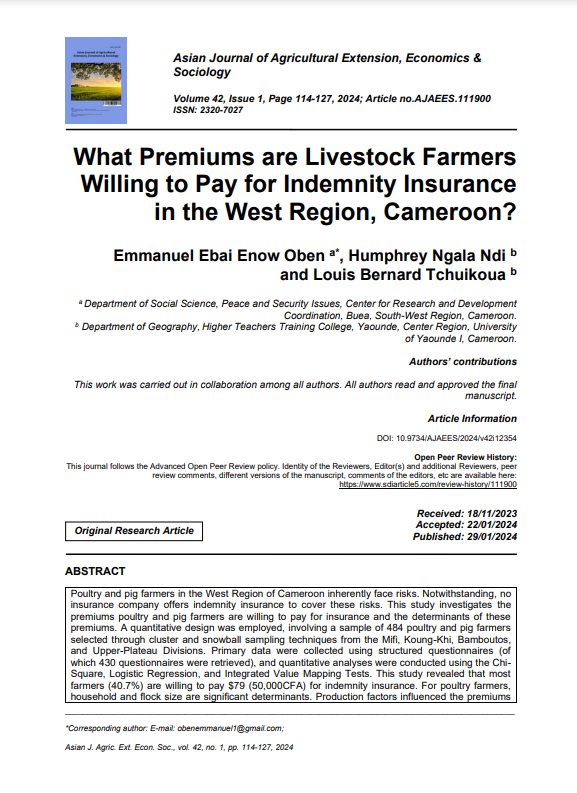What Premiums are Livestock Farmers Willing to Pay for Indemnity Insurance in the West Region, Cameroon?

Poultry and pig farmers in the West Region of Cameroon inherently face risks. Notwithstanding, no insurance company offers indemnity insurance to cover these risks. This study investigates the premiums poultry and pig farmers are willing to pay for insurance and the determinants of these premiums. A quantitative design was employed, involving a sample of 484 poultry and pig farmers selected through cluster and snowball sampling techniques from the Mifi, Koung-Khi, Bamboutos, and Upper-Plateau Divisions. Primary data were collected using structured questionnaires (of which 430 questionnaires were retrieved), and quantitative analyses were conducted using the Chi-Square, Logistic Regression, and Integrated Value Mapping Tests. This study revealed that most farmers (40.7%) are willing to pay $79 (50,000CFA) for indemnity insurance. For poultry farmers, household and flock size are significant determinants. Production factors influenced the premiums they are willing to pay for insurance than socioeconomic factors, with a predictive power/explanatory power of 33.9% and 9.5%, respectively. The Integrated Value Mapping (IVM) combining the predictive effects of both components was 38%, implying that 62% variability was not explained, as there are other factors to reckon with. For pig farmers, years of farming experience, annual farming income, division, household and flock size are significant determinants of the premium farmers are willing to pay for insurance. Socioeconomic factors predicted their willingness to subscribe to insurance almost at the same degree as production factors, with a predictive power/explanatory of 61.6% and 62.4%, respectively. The Integrated Value Mapping (IVM) combining the predictive effects of both components was 74.3%, implying that 25.7% variability was not explained as there are other factors to reckon with. This study recommends that the government and development partners should establish premium-subsidised indemnity insurance initiatives, especially for small-scale farmers.